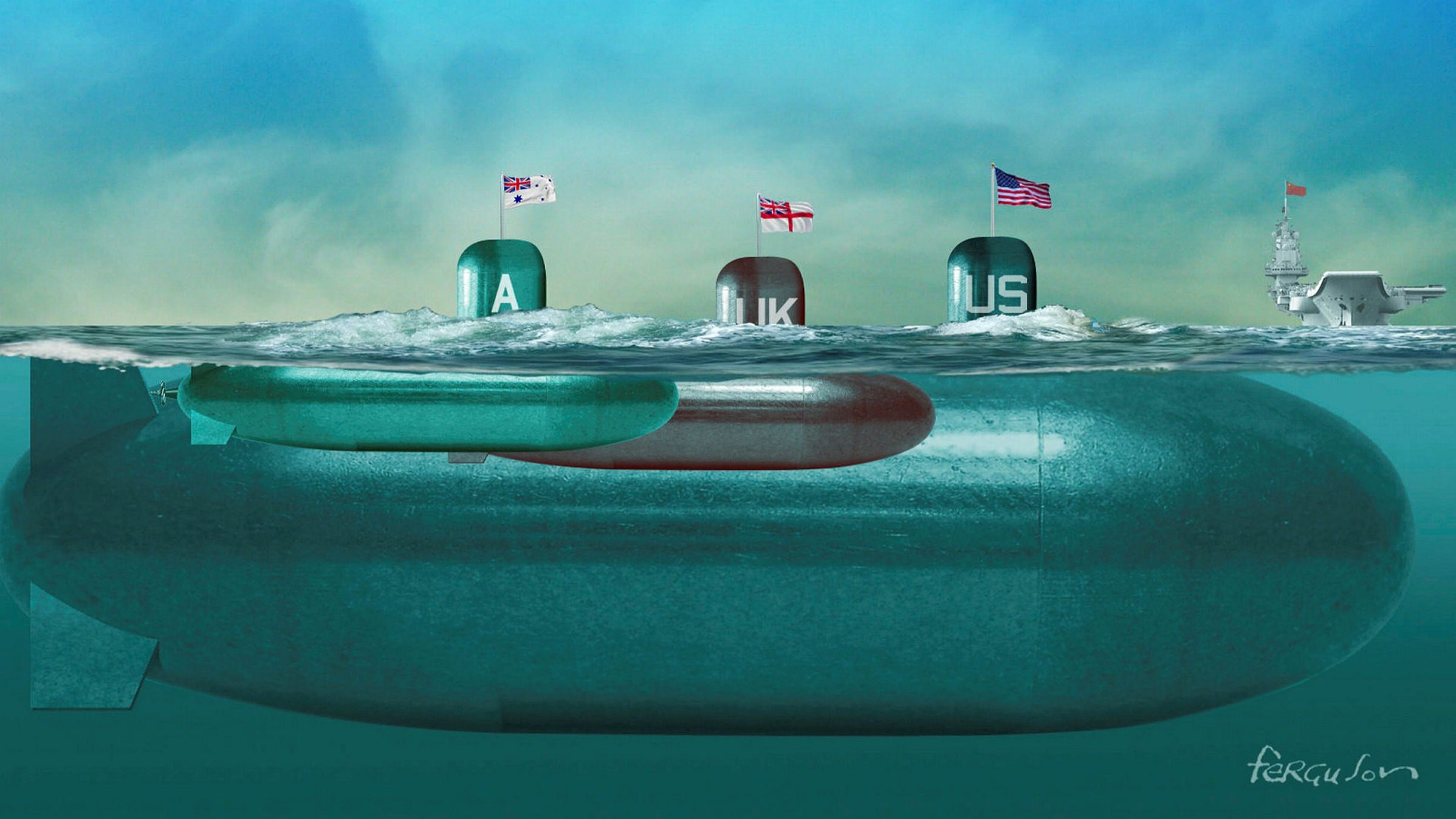News Highlight
The AUKUS Partnership: US, UK and Australia agree on the nuclear submarine project.
Key Takeaway
- The United States, the United Kingdom, and Australia have revealed details of their plan to build a new fleet of nuclear-powered submarines.
- Its goal was to balance China’s dominance in the Indo-Pacific area.
- Under the Aukus deal, Australia will get at least three nuclear-powered submarines from the United States.
AUKUS
- About
- AUKUS is a new trilateral strategic defence alliance comprised of Australia, the United Kingdom, and the United States.
- Except for the United Kingdom, this is the first time the US has shared nuclear propulsion technology with an ally.
- When the Australian Navy’s commander asked the UK for aid in procuring nuclear-powered submarines, the UK established the AUKUS alliance.
- It is not a collective defence treaty.
- It does not replace Australia’s 1951 ANZUS Treaty with the United States or alter its strategic connection with the United Kingdom.
Concerns of Australia
- To create deterrence capabilities against possible adversaries, Australia requires a favourable path.
- However, even the most encouraging consequence of the AUKUS consultations is not without flaws.
- The biggest problem for Australia is that many of its regional allies reject the Royal Australian Navy’s use of nuclear attack submarines.
- Several countries, like Indonesia, have been forthright about their doubts.
- Others, such as India, are uncomfortable about these submarines operating in the regional littorals, despite their political support for AUKUS.
Challenges for Australia’s Nuclear Submarines
- The US is uncertain about Australias’s nuclear subs
- Because of national security considerations, US policymakers are sceptical of creating nuclear-powered attack submarines for Australia.
- Nuclear design challenges
- US export prohibitions and a technology transfer agreement hamper the trilateral effort to build a new nuclear submarine design.
- Nuclear tech is complex and risky globally
- Under the international system, nuclear technology is sophisticated and poses significant proliferation dangers.
- UK’s Dreadnought hinders Australia’s submarine expansion
- The UK’s building of the Dreadnought-class ballistic-missile submarine programme and disparities between the Australian and American fleets offer an obstacle to expanding the Astute-class programme to Australia.
Significance of AUKUS
- Under the AUKUS agreement, the United States and the United Kingdom will help Australia build at least eight nuclear-powered submarines.
- AUKUS will help to create new jobs in the defence industry.
- And the submarine project, which will take decades, will demand cutting-edge technology.
- First, the three countries’ naval officials and technical personnel will work together over the next 18 months.
- Due to technological complexity, Australia’s nuclear submarine fleet may not be operational until around 2040.
- The ability of nuclear-powered submarines to stay submerged for extended periods with enough fuel to continue for years theoretically.
- It is advantageous in stealth attacks, which is their major advantage.
- Traditional submarines driven by diesel-powered electric engines must surface regularly to recharge their batteries, making them more detectable.
- The new military alliance will be important in resolving the Indo-geopolitical Pacific’s position.
- Analysts believe the purpose is to curb the spread of China’s footprint.
- The AUKUS alliance has outlined several steps to prepare Australia’s military infrastructure to deliver AUKUS capabilities.
- The most noteworthy of these projects was the proclamation of a “Future Naval Base” on Australia’s east coast.
Implications for India
- Increased security cooperation
- The collaboration between Australia, the United Kingdom, and the United States will lead to expanded security cooperation in the Indo-Pacific area.
- This could help to strengthen India’s technology skills and open up new trade and investment opportunities.
- Impact on regional dynamics
- The launch of AUKUS might considerably impact Indo-Pacific regional dynamics, particularly how other countries in the region respond.
- India must carefully navigate these dynamics and protect its interests.
Conclusion
- Despite regional partners’ reservations, the AUKUS collaboration can improve Australia’s defence capabilities by constructing nuclear-powered submarines.
- While there are obstacles to overcome, such as US export laws and the intricacies of nuclear technology transfer, a trilateral effort to develop a new submarine design appears to be the most likely choice.
- The AUKUS relationship has ramifications for the strategic contours of maritime Asia.
- As well as highlighting the challenges involved in transferring essential technologies.
- It is a lesson for India as it attempts to develop comparable capabilities.
Pic Courtesy: Financial Times
Content Source: BBC



